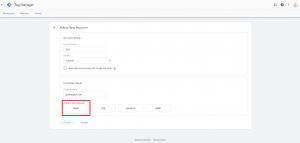— June 7, 2018

geralt / Pixabay
You often hear that professional services are “all about the people.” That’s true. And it’s why talent acquisition is so important to the success of a professional services firm. Finding, attracting, and keeping good talent can make or break a services organization.
There’s an old saying about professional services: “all your assets walk out the door every night.” And that’s also true. Expertise is your product and it’s all you have to sell. Without the right expertise, your company cannot attract and retain clients. The right people provide you with a competitive advantage and can put you on the road to success and profitability. Just as important, great talent tends to attract more great talent.
The Difference Between Talent Acquisition and Recruiting
It’s not uncommon to confuse talent acquisition and recruiting — and that can be a mistake for a professional services firm. The difference is significant. Talent acquisition is a long-term strategy that identifies and addresses business goals, while recruiting is simply the process of filling a specific position or positions to address more immediate needs.
Talent acquisition is about identifying talent in the marketplace and building a pool of potential candidates, sometimes to fill expertise needs that aren’t even requirements yet. Talent acquisition is proactive while recruitment is reactive.
10 Elements of an Effective Talent Acquisition Strategy
To be effective, a talent acquisition strategy must have the full support of your firm’s leadership and complement your overall business strategy. To accomplish that, you’ll need to understand what talents will be required at various stages of business growth and establish a process to attract and engage the requisite talent when needed.
Let’s walk through the 10 key elements of an effective talent acquisition strategy:
1. Research
It’s crucial to roll up your sleeves and do some original research on your market to determine what’s important to new hires. What motivates the best candidates to choose one firm over another? Is it corporate culture? The workplace environment? The benefits? What will give you a competitive advantage? Often the nature of the work and the caliber of colleagues are key.
2. Your employee brand
Nobody likes working for a lousy boss. How current employees feel about the workplace environment and firm leadership will go a long way in helping – or hindering – how you position your company to attract new talent. Your employee brand must be consistent with your overall brand. If your organization has, say, a fun, creative reputation your employee brand better have an equally fun and creative vibe to support and reinforce your firm’s brand.
3. Messaging
What specific messages do potential hires need to hear to seriously consider working at your firm? What are the concerns or objections typically raised by candidates with the talent and skill sets you’re looking for? Are you and your company positioned to successfully address and overcome them? What evidence do you need to be able to present to support your argument?
4. Your Website
These days, your website is the first place candidates are likely to go to learn more about your firm and attempt to determine if it’s a good fit for them. They’ll not only be looking for information about specific positions but to gain a better understanding of your culture and what it’s like to work there. Does your website reflect a place where employees are encouraged to learn and grow? Does it represent both your overall brand and employee brand and convey key messages that promote and reinforce them? Your website can be an effective centerpiece for your talent acquisition strategy if it’s optimized for online search, incorporating keywords best associated with the types of talent you’re looking to attract.
5. Social Media
There is no question social media is the place many people turn to get what they perceive to be honest and accurate information about any number of subjects — and to see who is driving conversations on various platforms. Many firms use LinkedIn and Twitter for business development and Facebook to convey their culture. In fact, research we conducted on high-growth, high-value professional services firms in the course of writing our book, Spiraling Up, revealed that high-growth companies are more likely to rely on online recruiting than more traditional approaches for talent acquisition.
That why it’s important to cultivate positive engagements on social media and regularly share your firm’s expertise there. Sharing expertise and providing something of value not only attracts new clients, it also helps land highly qualified prospective employees.
6. Visible Expertise®
To ensure that your firm’s expertise gets recognized by the right people, it needs to be visible. That means exposing it to the right audience through speaking, writing, blogging, and opening dialogs through various channels. It’s what we call becoming a Visible Expert®. It’s a valuable, effective way to develop new business and recruit new talent. Encouraging staff to become more visible helps the individual and the firm by fostering an environment that supports learning and growth. That kind of proactive, nurturing environment also acts as a powerful incentive for prospective talent to join your team.
7. Awards and Recognition
While having a positive culture and policies in place that can help recruit the best talent does not guarantee that those features will be readily apparent. Prominently displayed recognition or awards from objective third parties, however, can help overcome those limitations. For example, it’s one thing to say your firm is a great place to work. It’s quite another to have an award from a respected industry association or publication that touts your company as a Best Place to Work.
8. Talent Evaluation
Once you’ve attracted talent, how will you evaluate it? Evaluating talent can be challenging because there may be a variety of criteria, some of which can be conflicting because of things such as short-term and long-term needs. What may not be all that important right now may be crucial down the road, so be aware of future potential as well as current, relevant skills and experience. Don’t forget any applicable current and future regulatory requirements, depending on your industry and timing.
9. Promotion
Once you determine what expertise you’re going to promote, you’ll need to figure how you’re going to promote it. How will you make your firm and your experts visible? Of course, there’s no shortage of paid recruiting sites. But think larger. Try exploiting social media not only to recruit for a vacant position, but to build awareness and appreciation for your unique expertise, work environment, and value. Make a clear case for why the best talent would want to work at your firm.
10. Policy Alignment
After addressing the previous nine key elements to a successful talent acquisition strategy, don’t get caught between your desired culture and your formal policies. Do you have policies in place that make your firm a great place to work? Are they at odds with your strategy? Do your policies encourage your staff to share their expertise and become more visible or do they actually discourage it? How much flexibility is there? Policy alignment is critical for creating and supporting the kind of corporate and employee brands that attract top talent.
A Final Thought
Talent acquisition is central to the success of most professional services firms. It’s unlikely that your firm will attain its true potential unless you have a proper, proactive talent acquisition strategy in place. The ten key elements we discussed here provide the framework that will make your strategy as effective and efficient as it can be.
Additional Resources:
- Get the knowledge and tools you need to lead your firm through the rebranding process. Download a free copy of the Hinge Rebranding Kit today.
- Check out the Professional Services Guide to Research and get the tools and knowledge you need to lead your firm through a successful brand research program.
Business & Finance Articles on Business 2 Community
(94)
Report Post






